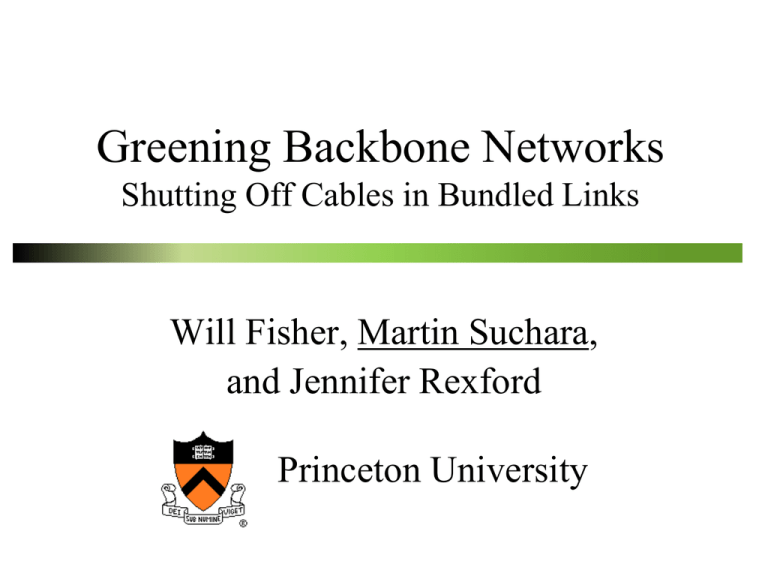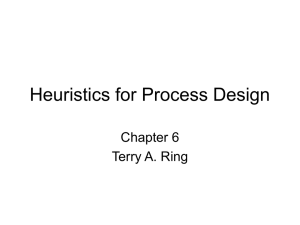Greening Backbone Networks: Reducing Energy Consumption by
advertisement

Greening Backbone Networks Shutting Off Cables in Bundled Links Will Fisher, Martin Suchara, and Jennifer Rexford Princeton University Why Focus on Networks? Saving energy in servers vs. networks Potential for savings in wired networks $2 billion annual power bill in USA alone Over-engineering and diurnal patterns Power draw does not scale with load 2 Power Consumption of Network Hardware Router may consume 200 - 400W plus 100 W per line card Power draw does not scale with load chassis line card 3 Turn Off Unneeded Routers / Links? Turning off links has drawbacks Increased RTT, fragility, etc. 4 Links in Large Backbone Networks Links come in bundles Gradual upgrades, hardware costs, etc. City A City B 5 Links in Large Backbone Networks Links come in bundles Gradual upgrades, hardware costs, etc. Bundled link behaves as a single logical link In large networks Majority of links bundled Bundle sizes 2 – 20 cables per link 6 The Problem… Powering all cables is wasteful City B City A 30-40% utilization 7 Proposed Solution Only power up cables that are needed Transparent to routing protocols City B City A 80% utilization 8 Overview I. Optimization problem formulation & solution II. Experimental evaluation of energy savings III. Conclusion 9 The Problem Algorithm used by network operators Input: network configuration and load Output: list of powered cables Integer linear program: min # powered cables s.t. link loads ≤ capacities flow conservation carries all traffic demands NP-hard in general → need heuristics 10 Related Tractable Problem How would the solution look like if energy consumption was proportional to link load Minimize sum of link loads rather than the number of powered cables Fractional vs. integer linear program Benefits: tractable, provides upper and lower bound on potential power saving, starting point for heuristics 11 First Attempt – Naïve Solution Always round up: → Up to n times worse performance where n ≈ number of cities 12 Three Increasingly Sophisticated Heuristics Start with the naïve solution and perform local search 1. Fast Greedy Heuristic (FGH) 2. Exhaustive Greedy Heuristic (EGH) 3. Bi-level Greedy Heuristic (BGH) 13 The Fast Greedy Heuristic (FGH) 1. solve the fractional linear program and round up 2. identify link with greatest rounding up 3. round down by → permanently removing one more cable in that link 4. goto step 1 if feasible solution exists 14 Overview I. Optimization problem formulation & solution II. Experimental evaluation of energy savings III. Conclusion 15 Experimental Setup Determine energy savings and ability to run algorithms in real time Solve the simple linear program using AMPL / CPLEX Experiments repeated for bundle sizes 1 to 12 16 Topologies Abilene with real measured traffic demands Waxman and hierarchical topologies 17 energy savings (%) Energy Savings– Abilene Topology Similar performance of heuristics Turn entire link on or off bundle size Energy savings depend on the bundle size. 18 Waxman and Hierarchical Graphs The same Turn entire link on or general trend off 19 Execution Time Topology FGH EGH BGH Abilene 8 sec 50 sec 5 min Large synthetic minutes minutes to hours FGH is well suited for real-time execution 20 Overview I. Optimization problem formulation & solution II. Experimental evaluation of energy savings III. Conclusion 21 Conclusion Powering all links in a bundle usually not needed Design and evaluation of simple heuristics Significant energy savings Low computational complexity Can choose the simplest heuristic (FGH) 22 Thank You! 23











